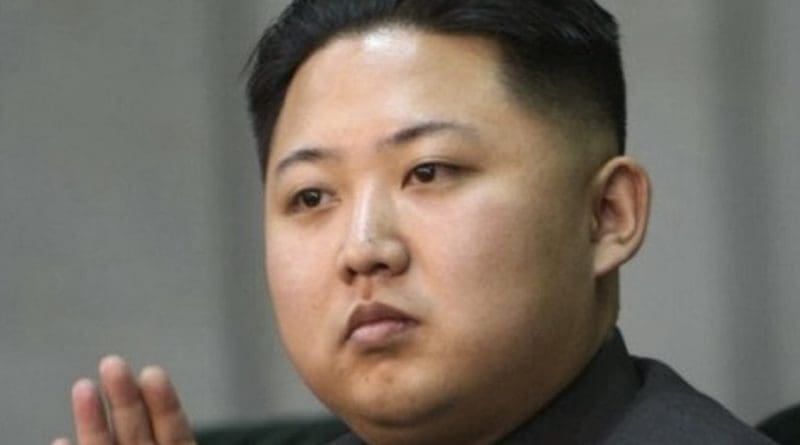What North Korea’s Statement Against Trump Really Means – OpEd
By Published by the Foreign Policy Research Institute
By Benjamin Katzeff Silberstein*
It would be hard to deny that rhetoric on and around the Korean peninsula is at a high mark. United States President Donald Trump’s words about “fire and fury” aimed at North Korea sounded almost like the typical rhetoric coming from North Korea. North Korea’s response, seemingly implying a threat of bombing Guam, was unusually direct and concrete.
Still, it is important to remember one key fact that has gotten lost in the bluster and chatter: Neither Trump’s statement, nor North Korea’s response, imply any change of the status quo.
Trump’s words were dangerously crude, and struck a tone that previous American presidents have not taken toward North Korea. At the end of the day, however, striking North Korea has never not been an option for the Unites States. Within the strategic confines of the North Korean nuclear issue, it has always been implied that the U.S. would consider striking North Korea should it sense serious, imminent and tangible threats against itself or its allies. That is what overflights of bombers over the Korean peninsula—which the U.S. has often conducted after North Korean provocations and did only a few days ago—intends to signal. Trump’s statement was reportedly spontaneous, rather than a result of newly calculated U.S. language or new red lines. In other words, it was not intended to signal a change of policy.
Similarly, North Korea’s threat against Guam was not a shift of position. The whole point of North Korea demonstrating its ICBM-capacities is to show the U.S. that it has the capacity to strike its mainland, or islands such as Guam. It is worth re-reading the central passages in full:
The KPA Strategic Force is now carefully examining the operational plan for making an enveloping fire at the areas around Guam with medium-to-long-range strategic ballistic rocket Hwasong-12 in order to contain the U.S. major military bases on Guam including the Anderson Air Force Base in which the U.S. strategic bombers, which get on the nerves of the DPRK and threaten and blackmail it through their frequent visits to the sky above south Korea, are stationed and to send a serious warning signal to the U.S.
The plan is to be soon reported to the Supreme Command soon after going through full examination and completion and will be put into practice in a multi-concurrent and consecutive way any moment once Kim Jong Un, supreme commander of the nuclear force of the DPRK, makes a decision.
The execution of this plan will offer an occasion for the Yankees to be the first to experience the might of the strategic weapons of the DPRK closest.[1]
Note the following:
- The KPA (Korea People’s Army, North Korea’s military) is, according to KCNA, “carefully examining the operational plan” for striking Guam. That’s not exactly a threat of imminent bombing. Rather, it is simply stating that North Korea has plans readily available for how it would attack Guam, should it choose to do so. Anything else would be surprising given North Korea’s tense relationship with the United States, and its heavy emphasis on missiles in its strategic doctrine.
- That the plan is to be reported to Kim Jong-un, and will be put into practice if Kim Jong-un decides it should be, is also not a change of policy. Remember: Kim Jong-un is the supreme commander of the North Korean military. He could order any attack he wants at any time. This fact was true yesterday, and will likely be true tomorrow as well. Of course, the wording of the statement makes it sound as if though North Korea might launch an attack in the near future. But North Korea threatens its neighbors and adversaries in regular intervals. Consider the following paragraph from a news report in the spring of 2013, another time when tensions ran high between North Korea and the U.S., citing a North Korean statement:
“We formally inform the White House and Pentagon that the ever-escalating U.S. hostile policy toward the DPRK and its reckless nuclear threat will be smashed by the strong will of all the united service personnel and people and cutting-edge smaller, lighter and diversified nuclear strike means of the DPRK and that the merciless operation of its revolutionary armed forces in this regard has been finally examined and ratified,” it said. “The U.S. had better ponder over the prevailing grave situation.”
In other words, North Korea regularly makes it a point to remind its adversaries of its capabilities. In terms of pure language, this time appears to be no different.
None of this is to say that the current tensions are not dangerous. Words eventually need to be backed up by action for them to carry any meaning. In situations like this one, the danger of escalation beyond the point of no return, and of miscalculation, is grave and serious. That is precisely why words and rhetoric must not be overblown, and understood in their proper context.
About the author:
*Benjamin Katzeff Silberstein is an Associate Scholar with FPRI, focusing primarily on the Korean Peninsula and East Asian region. He is a doctoral candidate in the Department of History at the University of Pennsylvania, where he researches the history of surveillance and social control in North Korea, and a co-editor of North Korean Economy Watch. He publishes regularly on Korean affairs in publications such as IHS Jane’s Intelligence Review and The Diplomat, and has previously worked as a journalist, and has been a special advisor to the Swedish Minister for International Development Cooperation.
Source:
This article was published by FPRI
Notes:
[1] Source: Korean Central News Agency, “U.S. Should Be Prudent under Present Acute Situation: Spokesman for KPA Strategic Force,” August 9, 2017. North Korean outlets always write Kim Jong Un’s name in bold, and in a larger font.

